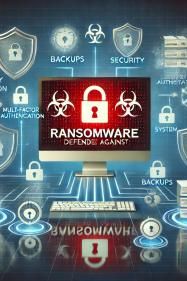Ransomware is one of the most prominent cyber threats today, targeting both individuals and organizations alike. In this article, we will dive into the ransomware definition, how it works, and the best practices for safeguarding your data from such attacks.
What is Ransomware?
At its core, ransomware is a type of malicious software (malware) designed to encrypt a victim's files, rendering them inaccessible until a ransom is paid. This form of cyberattack typically spreads through phishing emails, malicious downloads, or exploiting vulnerabilities in software. Once the ransomware is activated, it locks critical files and demands payment (usually in cryptocurrency) for their release. If the ransom isn't paid, the victim may lose access to their data permanently or have it leaked publicly.
How Does Ransomware Work?
Ransomware works by infiltrating a system, usually through deceptive tactics like phishing, like Cryptolocker or file-sharing websites. After the malware is installed, it begins encrypting files, making them unreadable. The attacker then provides instructions on how to pay the ransom, often warning that failure to comply will result in permanent data loss.
Ransomware can be categorized into two main types:
- Locker ransomware: Blocks access to the system entirely.
- Crypto ransomware: Encrypts individual files, making them unusable until a ransom is paid.
Why Ransomware Poses a Major Threat
The ransomware threat has grown rapidly in recent years due to the rise of remote work, increased digital transformation, and the lucrative nature of ransomware attacks. For businesses, this can mean halted operations, lost revenue, and reputational damage. For individuals, it may mean losing sensitive personal files forever.
How to Protect Your Data from Ransomware
To protect against ransomware, follow these best practices:
- Regular backups: Store copies of your important files offline.
- Security awareness training: Teach employees to recognize phishing emails and suspicious links.
- Keep software updated: Ensure all systems are patched to fix known vulnerabilities.
By understanding the ransomware definition and following preventive measures, you can reduce the risk of falling victim to this type of cyberattack.

